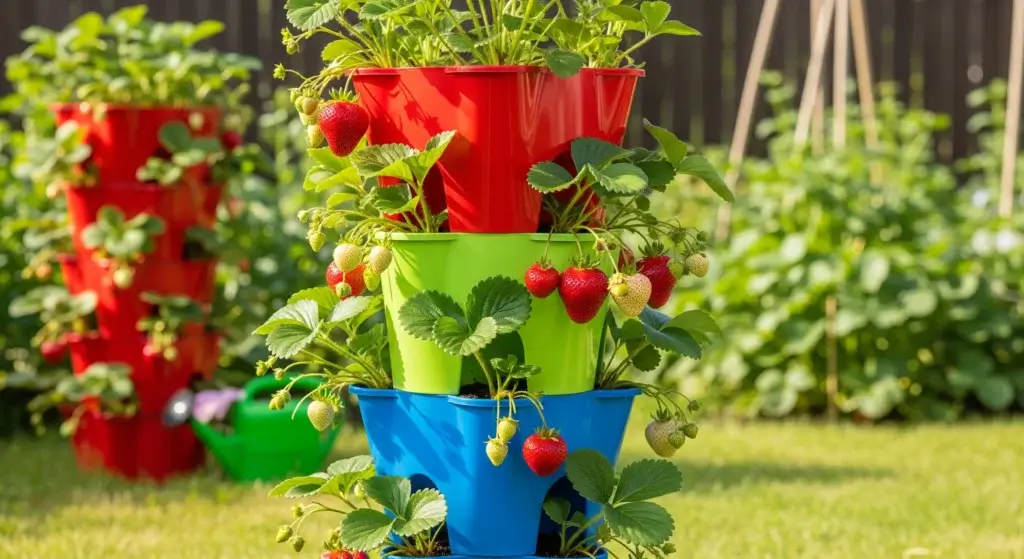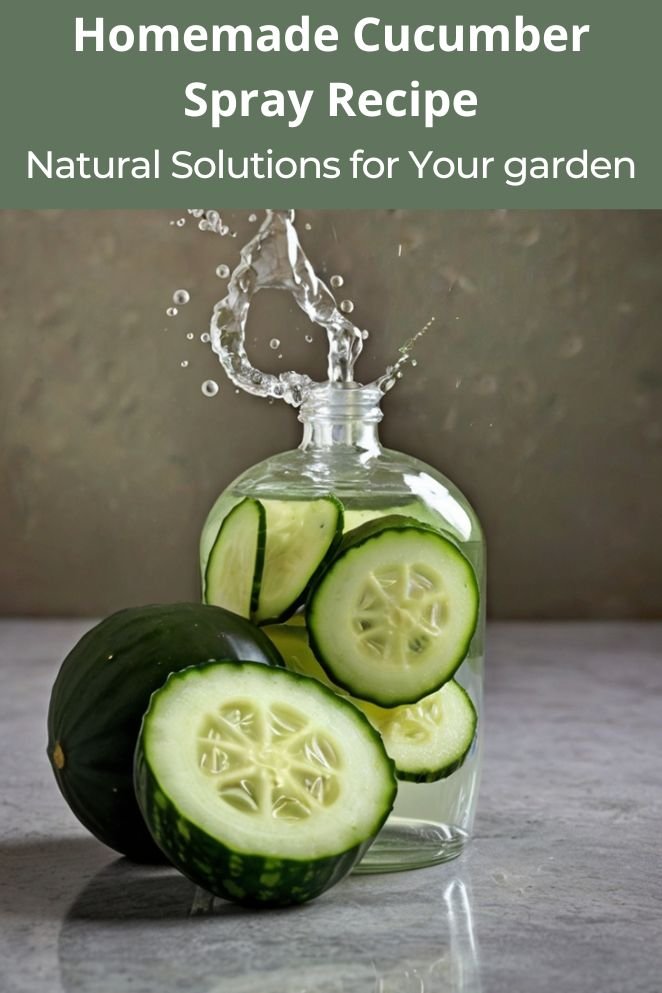
Growing cucumbers? Awesome choice—until the pests and fungi show up like uninvited party guests.
But don’t worry, you don’t need fancy chemicals or a lab coat.
This quick guide gives you simple, homemade sprays that actually work.
They’re cheap, easy, and won’t turn your garden into a toxic crime scene. It’s plant care with kitchen vibes—no drama, just happy cucumbers.
Understanding Common Cucumber Pests and Diseases
If cucumbers had a list of frenemies, these pests and diseases would be right at the top.
Before we get into the homemade spray magic, it helps to know who’s crashing the cucumber party:
Aphids
These little green (or black) bugs are like that one guest who shows up, drinks all your juice, and brings drama.
They suck the sap straight out of your plants, leaving the leaves curled and stunted.
Worst part? They also spread plant viruses faster than spoilers on Twitter.
Cucumber beetles
Cute name, terrible manners.
These yellow-and-black striped bugs go ham on your cucumber’s leaves, stems, and even roots.
But wait—it gets worse.
They also carry bacterial wilt, which basically turns your once-thriving plant into a floppy, wilted mess. Rude.
Powdery mildew
If your cucumber leaves look like they’ve been dusted in powdered sugar, you’re not imagining things.
That’s powdery mildew, a fungus that blocks sunlight, slows down photosynthesis, and makes your plant look like it’s having an identity crisis.
It thrives in warm, humid weather—basically a spa day for spores.
Spider mites
You probably won’t even see these guys without a magnifying glass, but you’ll know they’re around when your leaves start turning speckled, bronzed, and sad.
Spider mites pierce plant cells and suck the juices out—like a garden version of a vampire movie, but with less glamour and more leaf loss.
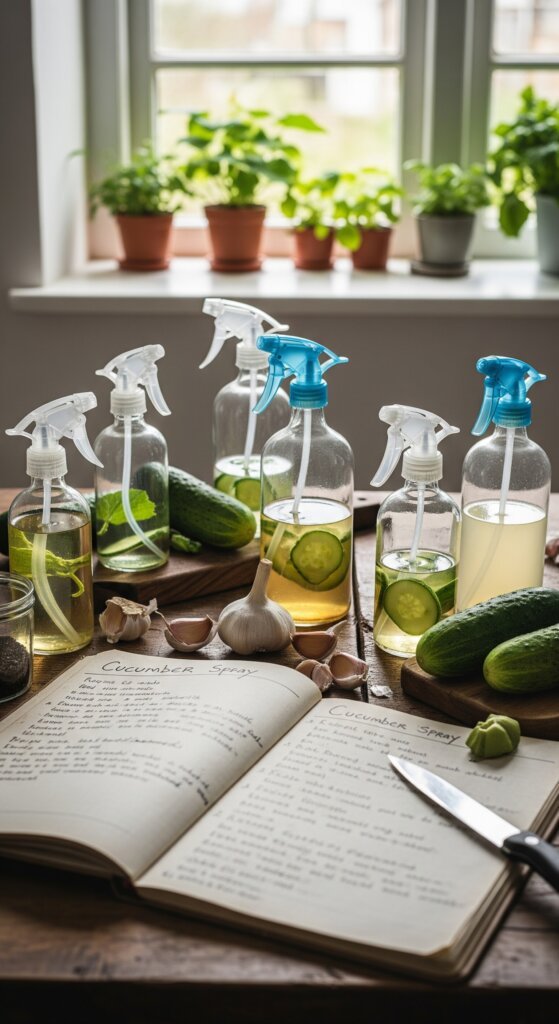
Top Homemade Cucumber Spray Recipes
You want happy, pest-free cucumbers without going full mad scientist? Good news—your kitchen already holds the secret weapons.
These homemade sprays are like plant potions: safe, simple, and surprisingly powerful.
Here’s your go-to lineup, explained like you’re swapping garden hacks over coffee:
1. Garlic and onion spray
This one’s a triple threat: garlic, onion, and mint.
Basically, it smells like your kitchen after a pasta night, but to bugs? It’s their worst nightmare.
What it does:
Repels pretty much everything with legs or wings—aphids, beetles, mites.
The sulfur in garlic and onion is super effective, and peppermint or mint adds a scent they really hate.
You’ll need:
- 1 medium onion
- 4 garlic cloves
- A handful of mint leaves or 20 drops of peppermint oil
- 2 tbsp cayenne pepper (spicy = extra scary for bugs)
- 2 tbsp liquid castile soap (like Dr. Bronner’s)
- Water
How to make it:
- Blend everything except the soap and water until it’s a spicy green smoothie.
- Let it chill (steep) for a few hours.
- Strain it with a fine mesh sieve or cheesecloth (nobody wants onion chunks clogging a spray bottle).
- Pour into a gallon container, add the castile soap, then fill the rest with water.
- Shake well before each use and spray weekly—especially under the leaves.
Bonus Tip: Wear gloves unless you want your hands smelling like garlic bread for three days.
2. Neem oil spray
Neem oil is like that friend who quietly shuts down drama without making a scene.
It messes with bugs’ hormones so they stop eating, mating, or even hatching.
Total buzzkill for pests.
What it does:
Kills off aphids, mites, whiteflies, AND fights fungal infections like powdery mildew.
You’ll need:
- 1–2 tbsp pure cold-pressed neem oil
- 1–2 tsp mild liquid soap
- 1 gallon of water
How to make it:
- Mix neem oil with the soap (the soap helps it blend with water).
- Slowly add to a gallon of water, stirring like you’re mixing up garden tea.
- Pour into a spray bottle and apply to all parts of the plant—including the leaf undersides.
- Reapply every 7–14 days or after rain.
Pro tip: Neem and sunshine don’t mix. Spray early morning or evening to avoid leaf burn.
3. Soap & oil spray
This spray is basic but brutal—like old-school wrestling for bugs.
The oil coats pests and blocks their breathing holes (yeah, bugs breathe through their skin—gross but true).
What it does:
Smothers soft-bodied invaders like aphids, spider mites, and whiteflies.
You’ll need:
- 1 cup vegetable oil
- 1 tbsp mild liquid soap
- 1 quart water
How to make it:
- Mix the oil and soap together for a thick concentrate.
- When ready to spray, dilute 2–8 teaspoons of this mix into 1 quart of water.
- Spray directly on affected areas—especially where bugs like to hide.
- Reapply every 4–7 days or until you stop seeing signs of infestation.
Heads-up: Don’t go overboard—too much oil too often can clog leaf pores (yes, plants breathe too!).
4. Baking soda fungicide spray
Powdery mildew making your cukes look frosted in the worst way?
This baking soda mix changes the leaf surface pH, making it hard for fungi to settle in.
Think of it as your cucumber’s anti-dandruff shampoo.
What it does:
Prevents and slows fungal growth—especially powdery mildew.
You’ll need:
- 1 tbsp baking soda
- 1 tbsp vegetable oil
- 1 tbsp mild liquid soap
- 1 gallon of water
How to make it:
- Mix all ingredients together until fully dissolved.
- Pour into a spray bottle.
- Spray on leaves weekly—especially if you spot white powdery spots starting to spread.
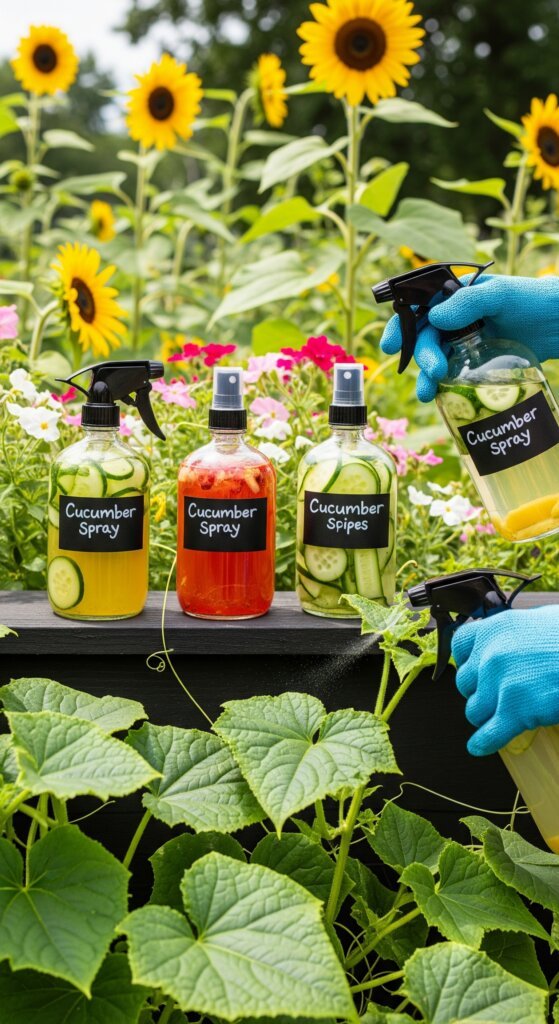
Application Tips for Optimal Results
Alright, now that you’ve got your homemade cucumber sprays locked and loaded, let’s talk application strategy—because even the best natural potion won’t work if you mist it on like a casual perfume spritz.
These tips will help you get the most bang for your bug-fighting buck.
Think of it like a mini skincare routine for your cucumber babies.
Timing
Spray your cucumbers early in the morning or late in the evening—basically when the sun isn’t out flexing.
Why? Midday sun + spray = scorched leaves. And nobody wants crispy cucumber plants.
- Morning sprays = best absorption.
- Evening sprays = chill vibes, no sunburn.
Coverage
Bugs are smart. They don’t hang out on the obvious top of leaves—they throw little pest parties underneath.
So tilt that spray bottle up and get under the leaves.
Cover all the leafy nooks and crannies like you’re frosting a cake.
Frequency
Don’t just spray once and ghost your plants.
Homemade sprays work best when you show up every 7 to 14 days.
It’s like going to the gym—one spray won’t solve everything, but regular effort? That’s where the glow-up happens.
Weather considerations
If it rains like the sky’s trying to cancel your gardening plans, your sprays probably washed away.
Sad but true.
After a downpour, reapply your spray, especially if it’s an anti-fungal or pest repellent.
Rain might be good for your plants, but it’s bad for your bug-fighting potions.
Test first
Always test on one leaf first. Some plants can be picky, and homemade sprays—especially with strong oils or soap—might be too spicy.
Wait 24 hours.
If that leaf still looks chill, go ahead and treat the whole plant.
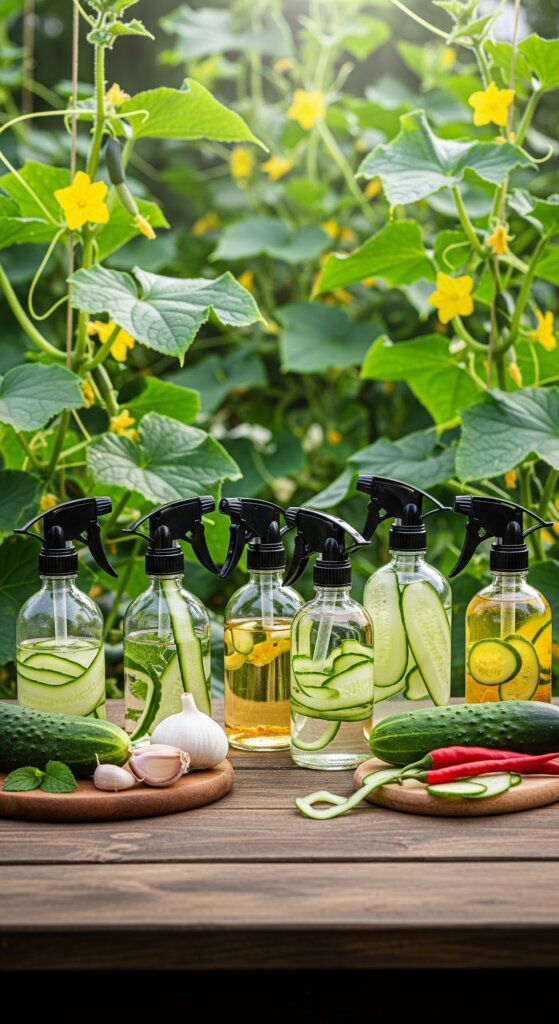
Final Scoop: Spray Smart, Stay Crunchy
Homemade sprays = garden glow-up without the toxic vibes.
They’re cheap, easy, and totally planet-friendly.
Garlic, neem, baking soda? That’s DIY plant magic.
Check your plants, spray when needed, and skip the chemical drama.
Your cukes stay happy, you stay sane—everyone wins.


